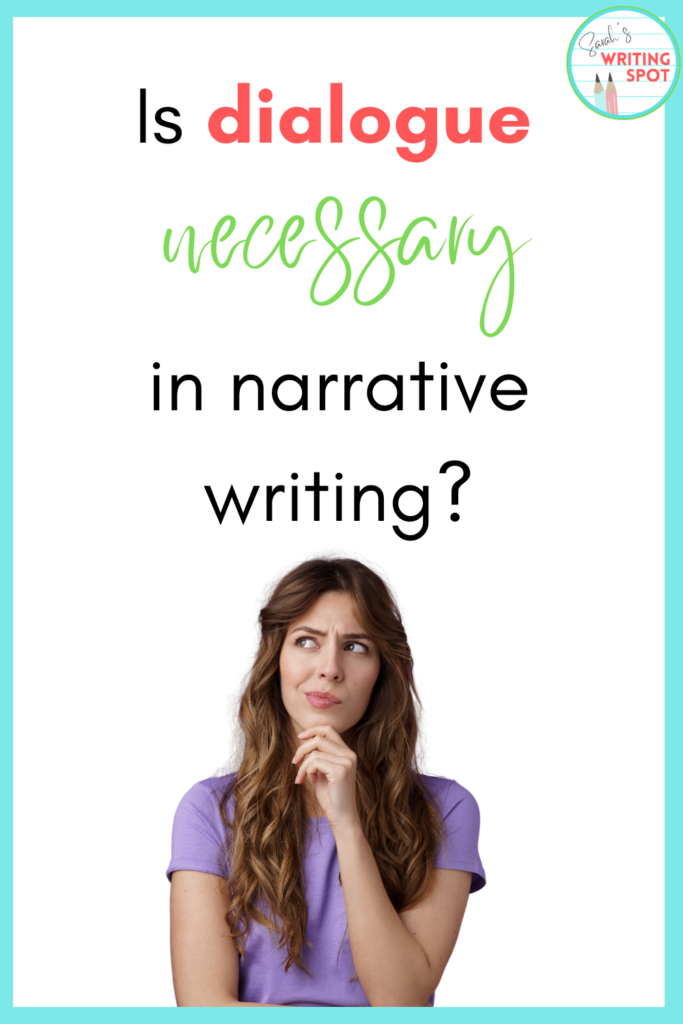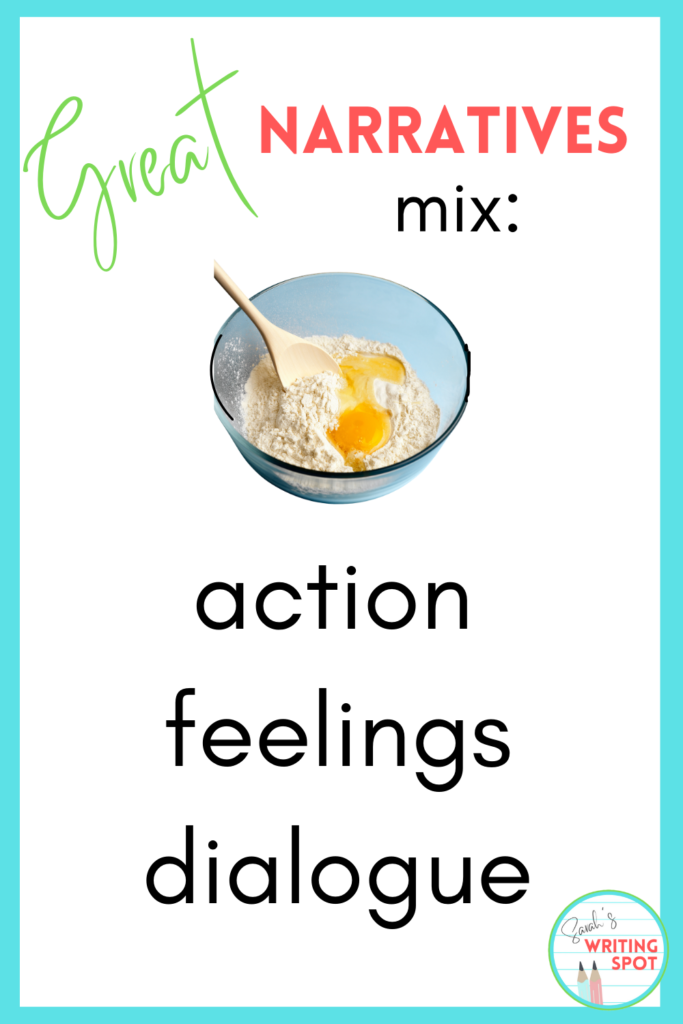Do students really need to use dialogue in narrative essay writing? (Can’t they just skip that part?) If you’d asked me this twenty years ago, I would’ve shaken my head and said, “You don’t HAVE to have dialogue.” But now, after many years of targeted writing instruction…my feelings have changed.
If you’ve read any of my other blog posts, you’ll know that narrative writing has always pushed me out of my “comfort zone.” However, that’s not necessarily a bad thing. It’s helped me better understand my students who struggle with narrative writing and find ways to help them.
When I first started trying to write my own narrative pieces, I really didn’t know where to start. (I sure loved to read long stories, but that didn’t mean I knew how to write them!) A 5-paragraph essay is so neatly organized. But narrative writing? Not so much.
So, how did I get over this narrative writing hump? Research. I researched examples of great narratives. I researched various writing curriculums. I researched different teaching styles. And I looked to see what they all had in common. Want to know what I discovered?

What type of writing uses dialogue for elementary students?
Elementary students practice all types of writing during the school year: descriptive, persuasive, narrative, informational, and so on. But, not all of them use dialogue. So, when should students use it?
Tip #1: Use dialogue for NARRATIVE writing pieces.
In elementary school, 2 types of narratives are usually taught: personal and fantasy. Personal narratives are stories that your students experienced in real life. Think: getting a puppy, jumping off the high dive, or meeting a baby sister for the first time. Fantasy stories are completely made up. Think: unicorns, fairies, and talking animals. Since both personal narratives and fantasies are stories, students should use dialogue in both of them.
Teaching dialogue to 4th graders and 5th graders is essential for narrative writing!
Simply put: dialogue breathes life into a story. Think of your favorite fiction story. Did it have dialogue? Almost certainly. That’s how we connect to the characters. That’s what makes them feel real.
Tip #2: Narrative writing should include a mixture of action, feelings, and DIALOGUE.
Writing a story is a lot like making a cake. When you mix all of the ingredients together, you get a delightful treat! If you leave one of the ingredients out…it’s not nearly as tasty.
Bottom line: Don’t leave out the dialogue. It’s the flour in your story “cake.”

Wondering HOW to teach dialogue in narrative writing?
So, what are the basics of dialogue punctuation? If you’re teaching dialogue to 4th graders and 5th graders, what conventions should they master?
Tip #3: Use real texts to examine dialogue rules.
I love to use the I Survived books by Lauren Tarshis as examples. Not only do upper elementary students LOVE these books, but most pages have short segments of dialogue mixed with action and feelings.
I like to turn to an interesting page, project it, and have students try to identify dialogue conventions on their own. I fill in the rules that get missed.
Some of the key rules we cover:
*quotes around the speaking part
*capital letter at the beginning
*end punctuation before the last quote
*using a tag such as “she said” before OR after the quote
*using words other than “said” such as “asked” or “replied”
*period at the end of the full sentence
*starting a new line with alternating speakers
Seems like a lot of rules, right? Yep. It can take a lot of practice for students to finally master dialogue punctuation. Want to know how to make practice fun? Check out Tip #4!
Looking for a FUN lesson plan on dialogue?
Teaching dialogue doesn’t need to include boring worksheets. Make it more engaging (and authentic!) with this fun lesson plan on dialogue below.
Tip #4: Use interesting photos with 2+ people (or animals) for dialogue inspiration!
Find 5-10 real photos that are silly, mysterious, or otherwise engaging in some way. Project one on the board. Invite students to create an imaginary conversation (using their new dialogue skills!) between the people in the photo.
I always like to do one as a class first to model. Then, I encourage students to try it on their own. Don’t forget to let students share out with their classmates! You’re sure to hear examples that bring out the giggles.
Final Thoughts on Dialogue in Narrative Essay Writing
So, to answer my earlier question: Do students really need to use dialogue in narrative essay writing?
YES! Yes, they do! And if they don’t add it naturally in the first draft, push them to go back and add some dialogue while they’re revising.
Like I said before, dialogue is one of the main ingredients in your students’ narrative stories. Let’s help them make their writing taste delicious!
SARAH
Other Documents:








